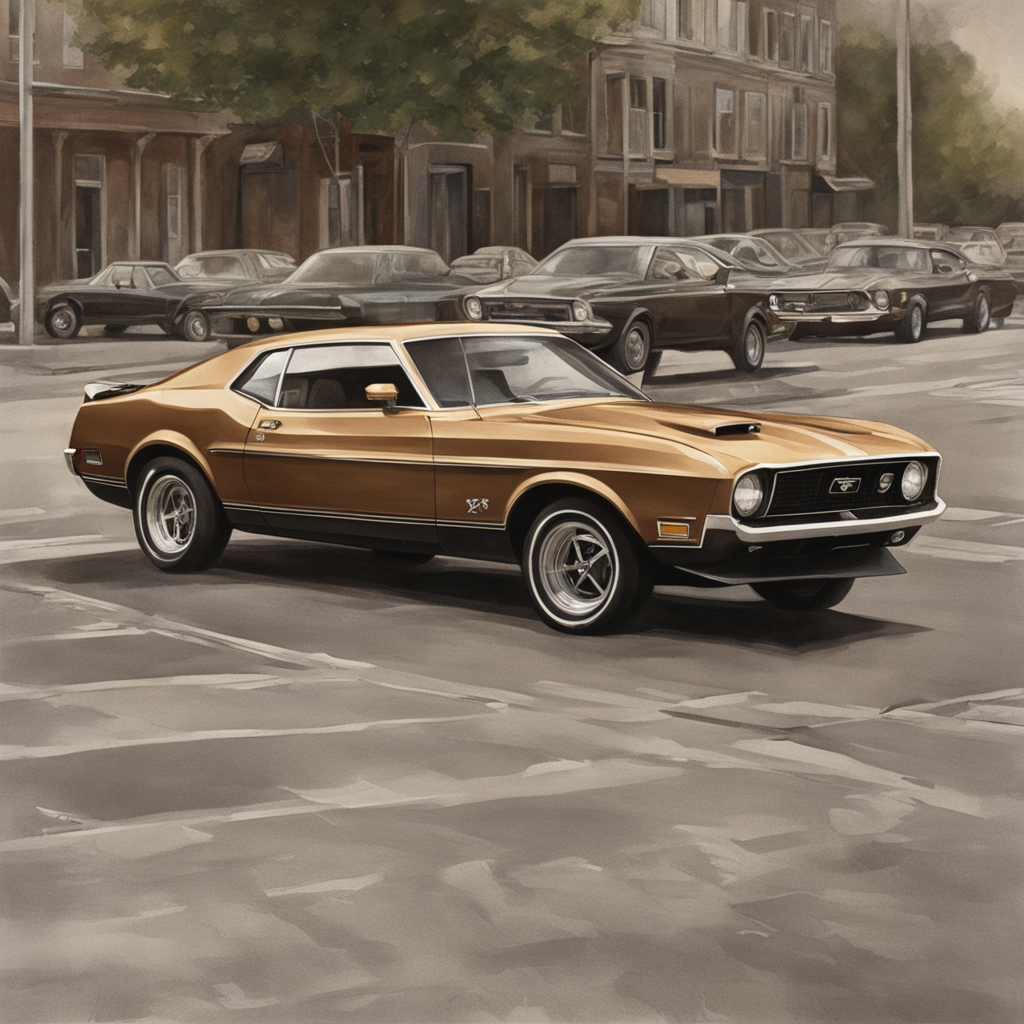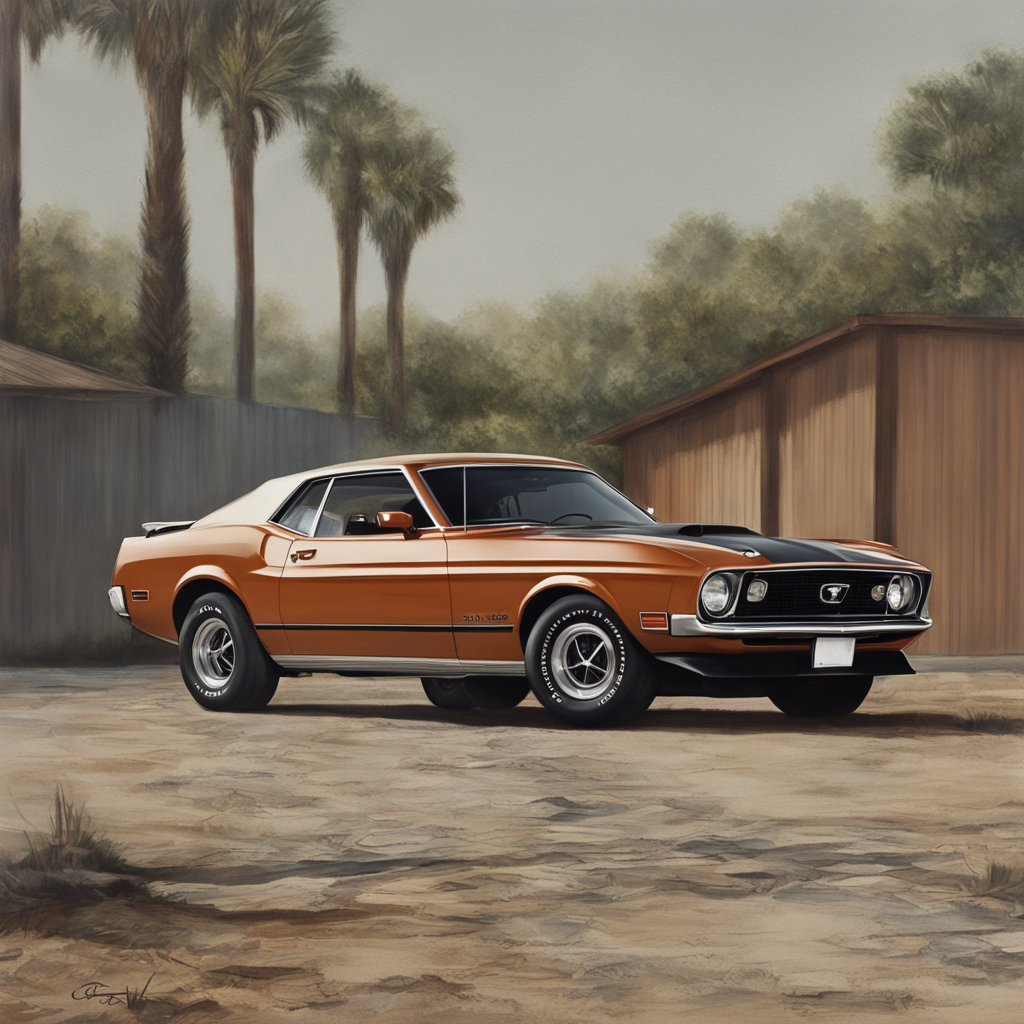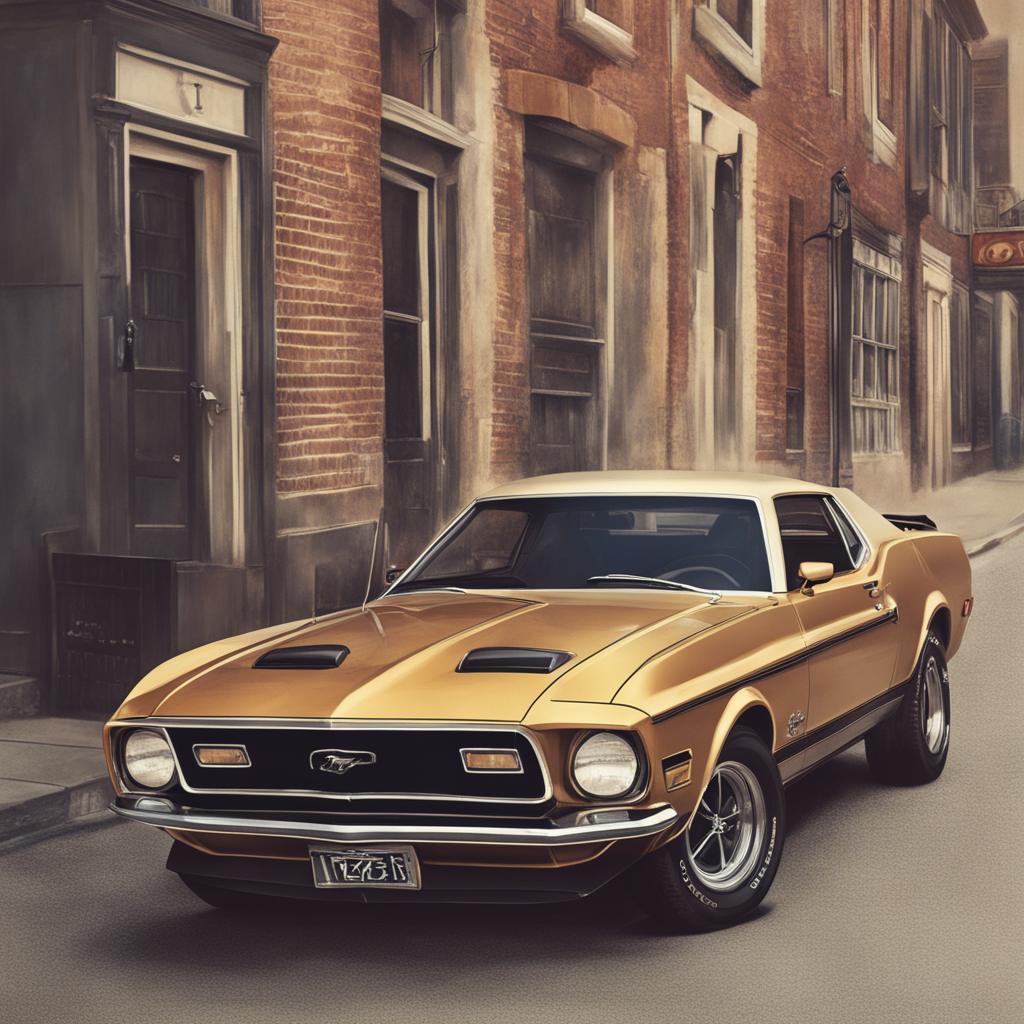The Final Year of the Original Pony Car’s Iconic First Generation
As the automotive world was evolving with stricter emissions regulations, safety standards, and fuel efficiency concerns, the 1973 Ford Mustang stood out as a symbol of rebellion, power, and American muscle. In this article, we’ll delve into the significance, design, performance, and collectibility of this iconic car.
Updated November 25, 2023
Brief History of the 1973 Ford Mustang
The first-generation Ford Mustang was introduced in 1964, revolutionizing the automotive industry with its sleek design, powerful engine options, and affordable price. Over the next nine years, the Mustang underwent various facelifts, engine updates, and trim level changes, cementing its status as an American icon. By the early 1970s, however, the muscle car era was coming to a close due to increasing government regulations and shifting consumer preferences.

Significance of the 1973 Ford Mustang Model Year
The 1973 model year marked the final iteration of the original Pony Car’s first generation. This year’s Mustang played a crucial role in bridging the gap between the classic American muscle cars and the more refined, fuel-efficient vehicles that would dominate the market in the following years.
Design and Styling of 1973 Ford Mustan
The 1973 Mustang’s design continued to evolve with subtle updates from previous years. The most notable changes included:
- A revised front grille with a wider and taller central section
- Freshened-up headlight bezels with rectangular surrounds
- Minor trim level adjustments, such as new chrome accents on the Fastback model
The overall appearance remained true to its roots, maintaining the classic Mustang silhouette.
Color Options and Trim Levels
For the 1973 model year, Ford offered a range of colors and trim levels:
- Base: A no-frills option with a single-bar grille and basic interior
- Mach 1: A performance-oriented package featuring a distinctive stripe and sport-tuned suspension
- GT: A high-performance variant with unique badging, stripes, and upgraded suspension
The available color palette included:
- Candyapple Red
- Wimbledon White
- Grabber Blue
- Polar White
- Black
- Torino Red
- Metallic Turquoise (exclusive to the Mach 1)
Performance and Specifications
The 1973 Mustang offered a range of engine options, each with its unique characteristics:
- 230ci (3.8L) inline-six: Producing 150 horsepower and 220 lb-ft torque
- 302ci (5.0L) V8: Delivering 149 horsepower and 240 lb-ft torque in the base model, or 175 horsepower and 265 lb-ft torque with the GT package
- 351ci (5.8L) V8: Generating 163 horsepower and 285 lb-ft torque
Transmission choices included:
- Three-speed automatic
- Four-speed manual
Engine Options for the 1973 Ford Mustang
The 1973 Mustang offered three distinct engine options, each with its unique characteristics:
- Base Engine: A 230ci (3.8L) inline-six producing 150 horsepower and 220 lb-ft torque
- Mid-Range Engine: A 302ci (5.0L) V8 delivering 149 horsepower and 240 lb-ft torque in the base model, or 175 horsepower and 265 lb-ft torque with the GT package
- High-Performance Engine: A 351ci (5.8L) V8 generating 163 horsepower and 285 lb-ft torque
Horsepower and Torque Ratings for the 1973 Ford Mustang
Here’s a breakdown of the engine options’ power and torque ratings:
| Engine | Horsepower | Torque |
|---|---|---|
| Base Inline-Six | 150 | 220 lb-ft |
| Mid-Range V8 (Base) | 149 | 240 lb-ft |
| Mid-Range V8 (GT) | 175 | 265 lb-ft |
| High-Performance V8 | 163 | 285 lb-ft |
Transmission Options

The 1973 Mustang was available with two transmission options:
- Three-Speed Automatic: A smooth-shifting automatic designed for comfort and fuel efficiency
- Four-Speed Manual: A manual transmission ideal for performance enthusiasts and driving enthusiasts
Variants and Special Editions
Ford introduced a few special edition models in 1973, including the Mach 1, which featured a distinctive stripe package, sport-tuned suspension, and unique badging.
The Fastback and Convertible body styles returned for the final year of the original Mustang’s first generation.
Fastback, Convertible, and Coupe Body Styles
In 1973, the Mustang was available in three distinct body styles:
- Fastback: A sleek, coupe-like design with a sloping rear deck lid
- Convertible: A top-down driving experience with a soft-top or hardtop option
- Coupe: A traditional two-door sedan with a fixed roof
GT Equipment Package
The GT package added unique styling cues, including:
- Stripes and badging
- Upgraded suspension
- Unique interior trim and seats
This package was available on select V8-powered Mustangs.
Impact on the Automotive Industry
As the muscle car era came to a close, the 1973 Ford Mustang played a significant role in bridging the gap between classic American performance and the more refined, fuel-efficient vehicles that would dominate the market in the following years. Its influence can be seen in many modern muscle cars, which often pay homage to the original Pony Car’s design and spirit.
Sales Figures and Popularity
The 1973 Mustang saw declining sales due to changing consumer preferences, increased government regulations, and the rise of foreign competition. Despite this, the model year still managed to sell over 117,000 units in the United States alone.
Influence on Competitor Models
The Mustang’s design and performance influenced many competitor models, including the Chevrolet Camaro, Dodge Challenger, and Plymouth Barracuda. These cars often borrowed styling cues from the Mustang while developing their own unique characteristics.
Collectibility and Value of 1973 Ford Mustang
Today, the 1973 Ford Mustang is considered a collectible model due to its rarity, historical significance, and performance capabilities. Prices for these vehicles vary depending on condition, originality, and trim level:
- Base models: $5,000-$10,000
- Mach 1 models: $8,000-$15,000
- GT models: $10,000-$20,000
- Convertibles: $12,000-$25,000
- Fastbacks: $8,000-$18,000
Buying Guide
When purchasing a 1973 Ford Mustang, consider the following:
- Originality and condition of the vehicle
- Engine and transmission functionality
- Interior and exterior trim quality
- Any necessary repairs or maintenance
- Market demand and pricing for similar models
By carefully evaluating these factors, you can find a 1973 Mustang that meets your needs and budget.
Conclusion: The 1973 Ford Mustang marked the final year of the original Pony Car’s first generation. This iconic model combined classic American muscle with modern design cues, making it a testament to performance and style. As a collectible model, the ‘73 Mustang is highly sought after by enthusiasts and investors alike. Whether you’re looking for a base model or a high-performance GT variant, this car remains an essential part of automotive history.

